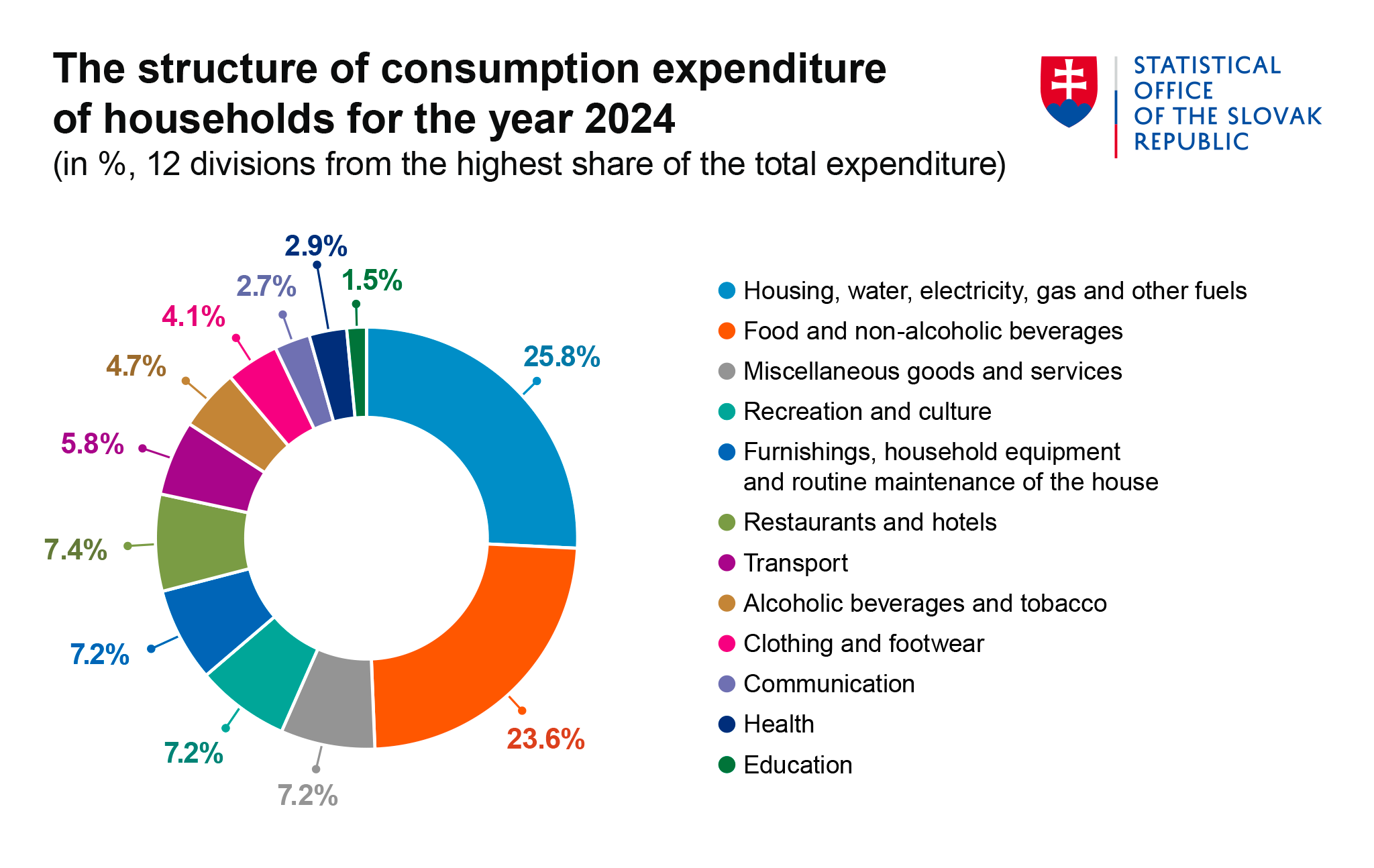Inflation returned to a three-year low of 2.1% in June
The prices of food, non-alcoholic beverages, but also beer, wine, and fuel dropped month-on-month, as a result of which June´s prices remained at May's level. However, the upcoming summer season has brought an increase in the prices of holiday packages and also water and sewerage. Overall year-on-year inflation continued to be influenced primarily by increases in the prices of goods and less important services in household expenditures, such as alcohol, medical and dental services, and also university fees.
Consumer prices of goods and services in June remained at the May level, the month-on-month price growth has been gradually slowing down since the beginning of the year, and after 5 months it reached zero. Year-on-year inflation has been oscillating around 2% since March of this year. Currently, in June, as in April, it reached 2.1%. It was the lowest inflation value in the last three years.
Download high resolution chart format PDF (88 kB) or PNG (224 kB).
Month-on-month development - June 2024 compared to May 2024
In June, consumer prices remained unchanged month-on-month on average. The positive impact on the month-on-month level was mainly due to the drop in prices in 3 out of 12 divisions, the main household expenditure groups. In particular, the prices of food with non-alcoholic beverages, transport, and also selected goods from the alcoholic beverages and tobacco division dropped. The prices of apparel and footwear, as well as postal and telephone services, did not change on average month-on-month, while prices in other divisions slightly increased, ranging from 0.1 to 0.7%.
The month-on-month price drop was recorded by the division of food and non-alcoholic beverages1), where prices dropped by an average of 0.2%. Meat, mineral waters and soft drinks, as well as vegetables, were cheaper. In transport, the fuel prices had the biggest impact on the overall average result, which were lower by 1.7% month-on-month. Compared to May, the prices of beer and wine from the alcoholic beverages and tobacco division also dropped.
On the other hand, the approaching period of summer holidays brought about an increase in the prices of holiday packages (by 3.9%) in the field of recreation and culture. Goods and services for household maintenance (furniture and furnishings division) were also more expensive, and fees for admission interviews for universities (education) also increased.
Consumers also paid extra for water and sewerage month-on-month, but the prices for the entire division of housing and energy were on average only higher by 0.1% than in May.
Year-on-year price development in June 2024 compared to June 2023
In June, year-on-year inflation reached a growth level by 2.1%. Year-on-year prices were higher in 11 out of 12 divisions (household expenditure groups), on average, only goods and services in the recreation and culture division were cheaper than last year. The year-on-year higher prices in hotels and restaurants, as well as other divisions with a lower share in household expenditure had the most significant impact on the value of inflation. But especially in transport, further in the field of alcoholic beverages and tobacco, and also in education and healthcare.
In the field of transport, the overall rate of inflation was negatively affected, especially by fuel prices. They were higher by 1.7% year-on-year. The prices of alcoholic beverages and tobacco (6.9%) were still higher than last year, as were the services of doctors and dentists in the health sector (6.7%). The fourth significant impact at the year-on-year level was the increase in fees for admissions to universities in the field of education.
Positive information for consumers was that the most important components of household expenditure, food and non-alcoholic beverages and housing and energy had approximately the same prices as a year ago. They either contributed minimally to the year-on-year price increase, or even had a dampening effect.
Food prices were higher only by 0.5% year-on-year. Among 9 food groups, 5 were more expensive year-on-year, namely oils and fats, bread and cereals, fish, sugar and confectionery. However, the price increase was only up to 4%.
At the same time, 4 food components became cheaper year-on-year, namely meat, milk, cheese and eggs, and due to seasonality, especially fruits and partly also vegetables.
Among housing and energy expenditure, imputed rent and solid fuels were cheaper year-on-year. All energies (gas and electricity) had the same or lower prices than a year ago, except of heat. Other components of housing expenditure were year-on-year more expensive ranging between 1-14%. It mainly concerned the maintenance and repairs of the dwelling, as well as the removal and disposal of waste, as well as water and sewage.
In total for the first half of 2024, consumer prices increased by 2.7% year-on-year.
Development of core and net inflation
In June, the total year-on-year inflation rate was 2.1%, core inflation reached 1.8% and net inflation reached 2.3%. Month-on-month core inflation remained unchanged and net inflation reached 0.1%.
Core inflation was affected by the price level growth after excluding the impact of changes in regulated prices (e.g. energy prices) and other administrative measures (e.g. tax adjustments, etc.). Net inflation is core inflation without changes in food prices.











 Help
Help